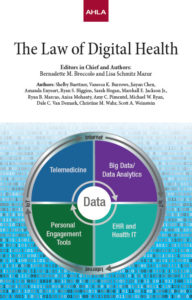The interest in leveraging the value of big data in digital health has become a focus of health care industry mainstays and newcomers alike. Within a challenging regulatory landscape, it is critical for those looking to play in this space to be proactive in planning their data strategy, with an eye towards compliance planning and solid due diligence to maximize its value. In this Q&A, big data thought leaders Bernadette Broccolo and Sarah Hogan, both partners in McDermott Will & Emery’s Health Industry Advisory group, discuss the challenges and opportunities that health industry stakeholders face when stepping into the world of big data.
For information on this topic and to hear the full Q&A with Bernadette and Sarah, listen to the newest episode of the Of Digital Interest podcast. You can access the full episode at here or subscribe to the podcast on iTunes, Pocket Casts or Soundcloud.
Q. Where is the value in big data in digital health? Who is seeing value today and what are their motivations?
BB: The best short answer is that everybody is seeing value – both long standing industry players and newcomers. The real value in big data comes not from raw data or just having a lot of data, but in the ability to use it and mine it, to have it in a form that’s analyzable. What’s very surprising too, in addition to the speed with which the interest in big data has escalated, is who is interested. In the past, one certainly expected academic medical centers and universities that have major research initiatives and clinical trial initiatives to be interested. But now others like molecular lab testing organizations, CLIA regulated laboratories and entrepreneurs are interested in capturing data.
SH: I think one of the surprising players is actually the pharma companies. It may sound odd to say that, but they have a lot of data – including a lot of clinical data – that they’re looking at mining to determine how they can target their therapeutics in a way that helps patients more efficiently. They are looking at themselves and asking “What does the 21st century pharma company look like?” (more…)
read more

 Subscribe
Subscribe On Tuesday March 6, during the HIMSS conference, McDermott Will & Emery along with our friends at
On Tuesday March 6, during the HIMSS conference, McDermott Will & Emery along with our friends at 


